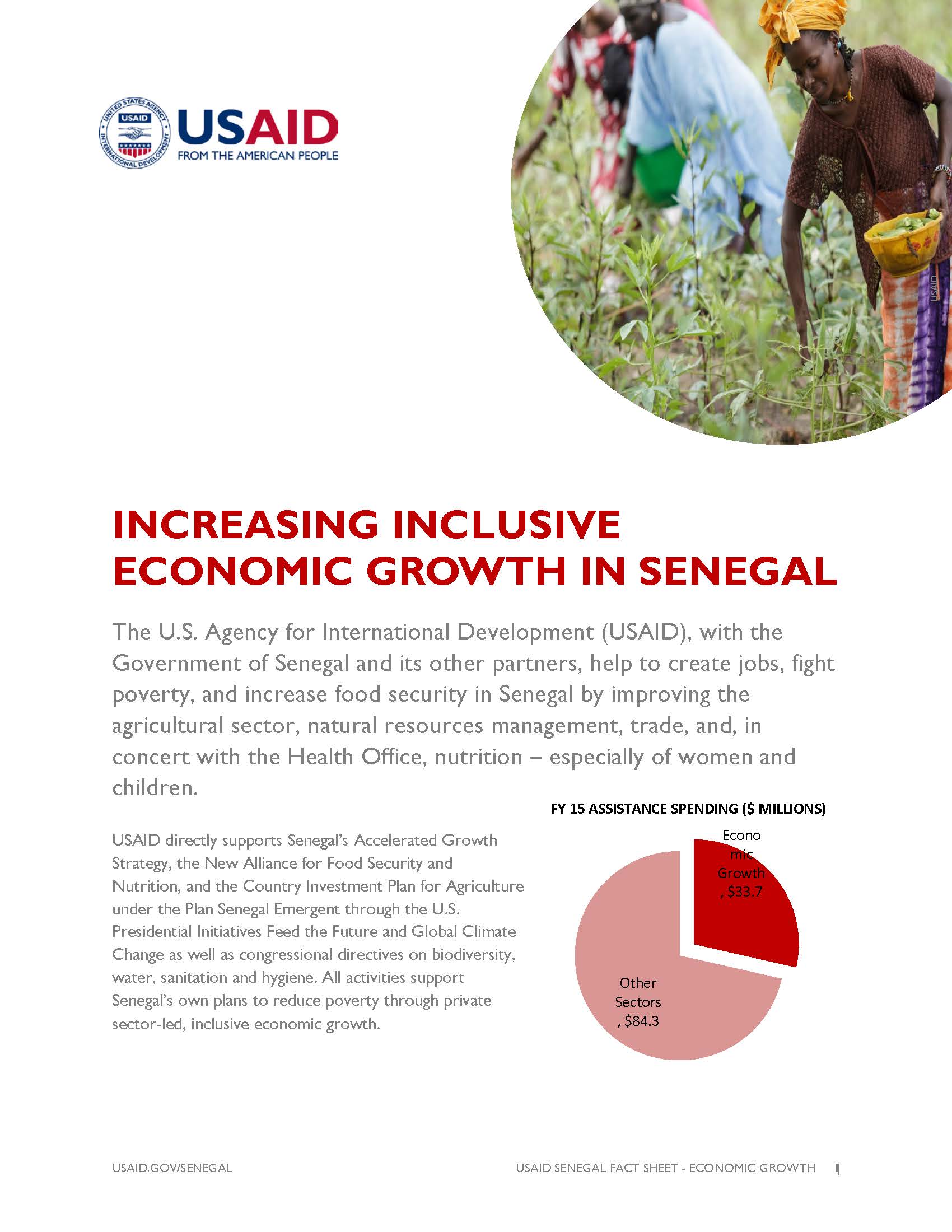The Government of Senegal’s growing investment in agriculture (more than 10 percent of GDP per year) has opened the door for stronger, resilient food security. In 2009, the country finalized its Comprehensive Africa Agriculture Development Program investment plan, setting a long-term vision for agricultural development as the primary driver of the country’s economic growth. The Office of the Prime Minister coordinates the investment plan—a clear illustration of Senegal’s commitment to elevate agriculture’s importance for the country’s future.
Senegal is characterized by a persistent moderate, chronic undernutrition where anemia and the “hidden hunger” of protein and micronutrient deficiencies feature prominently. Although Senegal has one of the lowest undernutrition rates in West Africa, the condition persists as an underlying factor in Senegal’s high child and maternal mortality rates.
Through Feed the Future, USAID works with the Government of Senegal to reduce poverty and undernutrition by promoting agriculture as a driver for economic growth. We focus on improving the value chains for four key agricultural products: rice, maize, millet, and fish.
- Our programs aim to improve productivity, harvest and collection, processing and the delivery of the right product quality and quantity according to the needs of the market
- USAID addresses demand for food products by encouraging diversified diets and other healthy choices
- Looking toward Senegal’s long-term needs for in the agriculture sector, we are strengthening higher education and agricultural research institutions as well as encouraging policies that enable private-sector investment
INCREASING INCLUSIVE ECONOMIC GROWTH IN SENEGAL ![]() (pdf - 415k)
(pdf - 415k)
By linking producers, processors and distributors, we encourage local production and manufacturing of goods, rather than relying on imports. Investment in agriculture also improves incomes and helps to reduce high unemployment rates. As a result, the country is better able to meet its food needs amid chronic shortages and improve nutrition, especially among women and children.









Comment
Make a general inquiry or suggest an improvement.